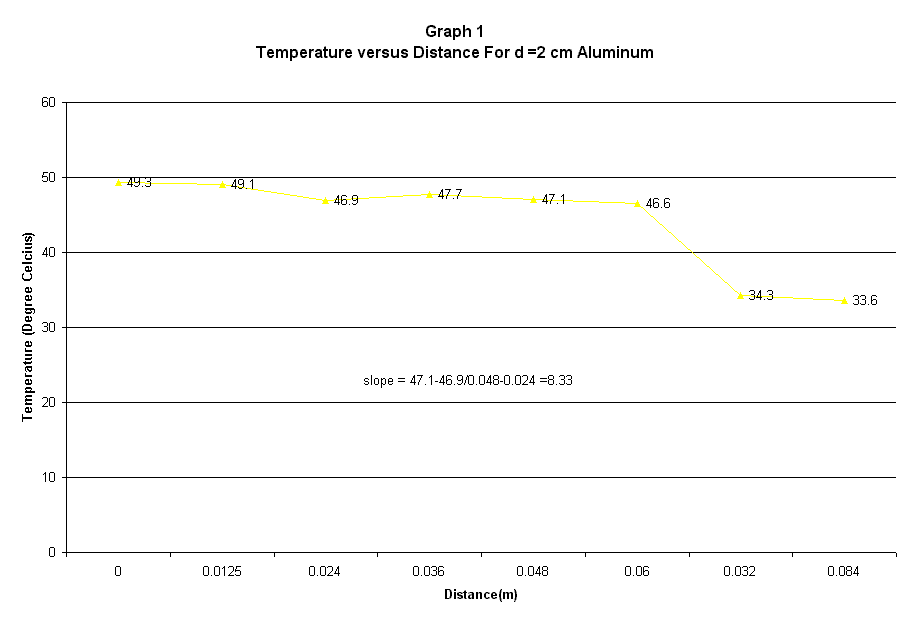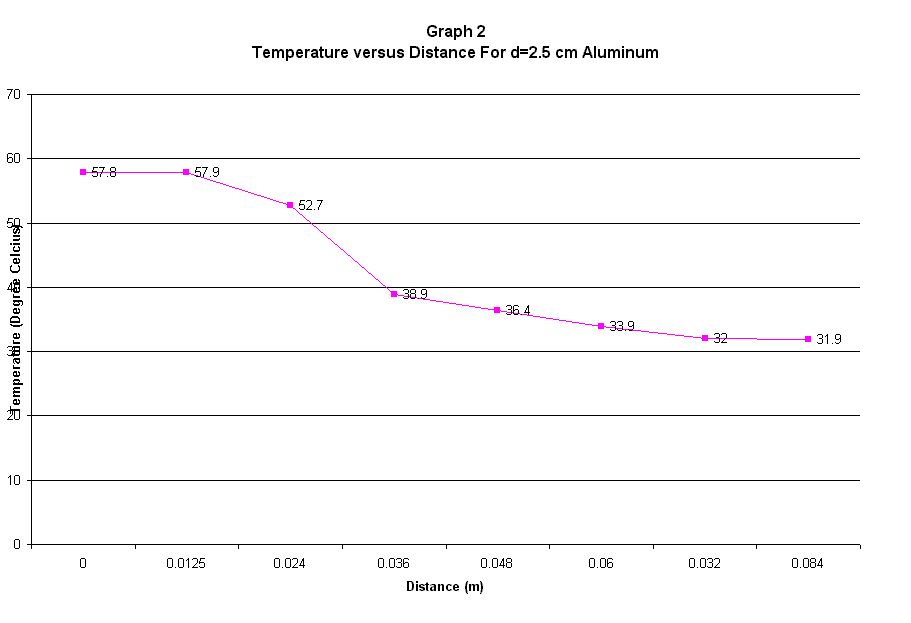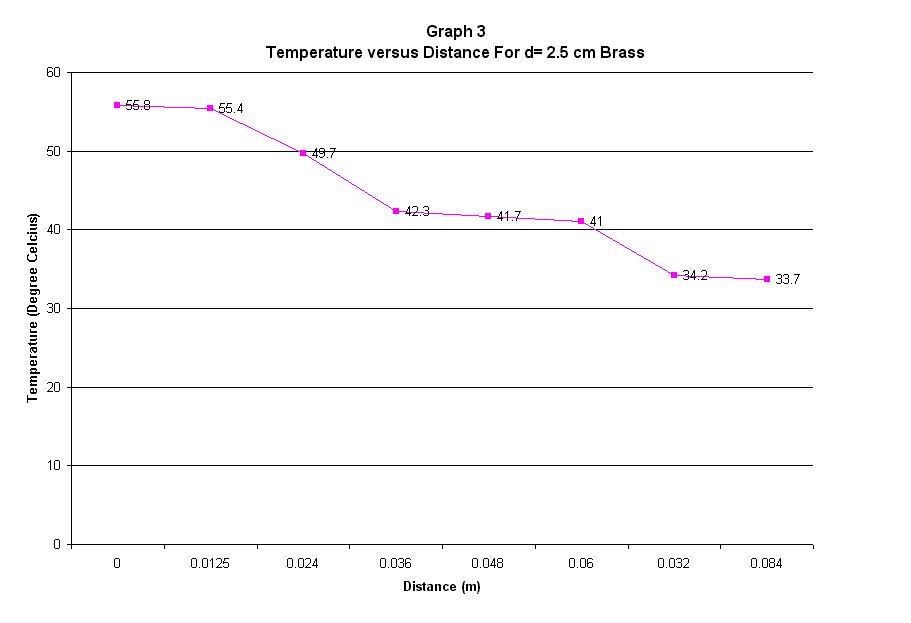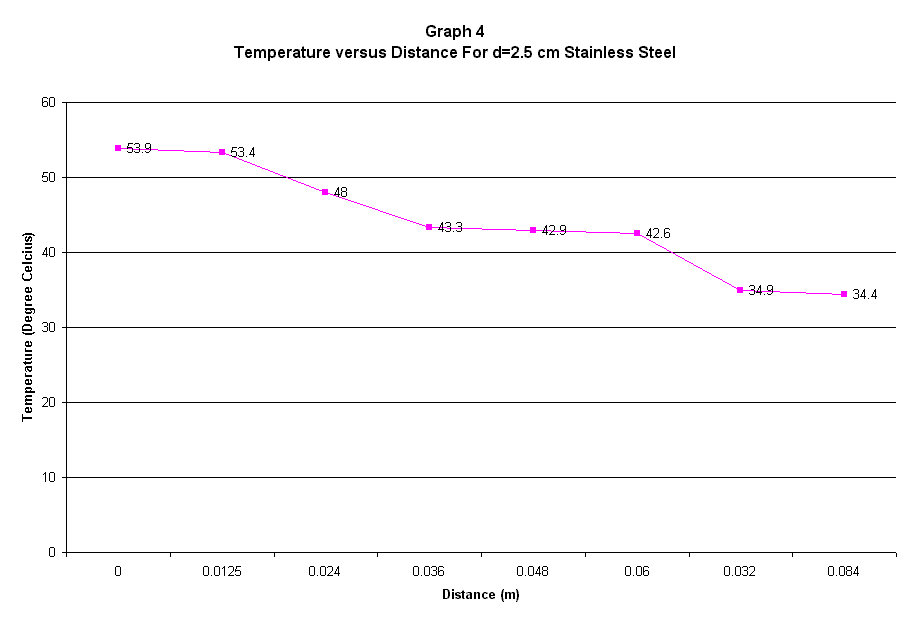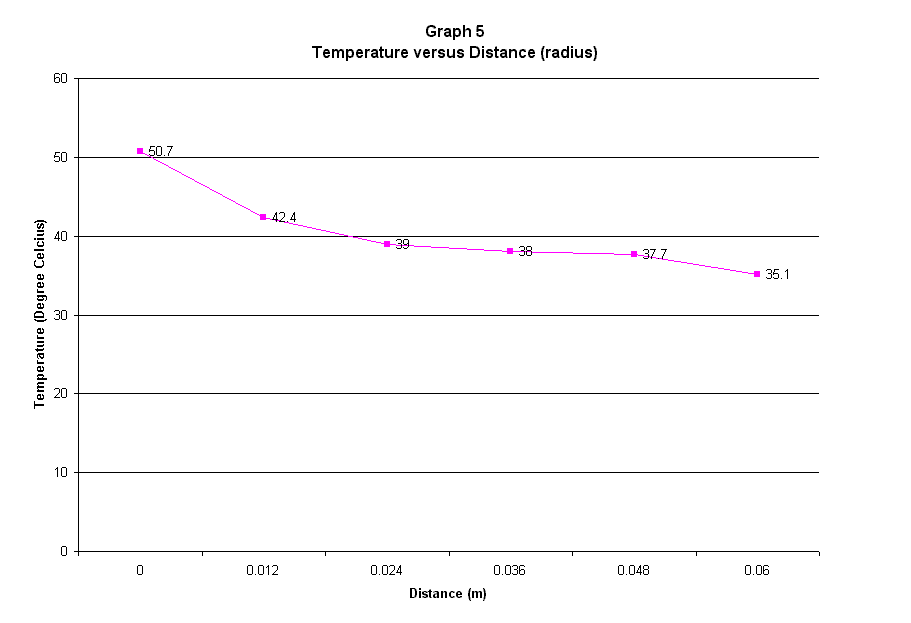Table Of Content:
|
|
Page number |
|
Summary/Abstract: |
|
|
Statement of Purpose/ Objective: |
|
|
Theory: |
|
|
Equipment/Description of Experimental Apparatus: |
|
|
Procedure: |
|
|
Data, Observation and Results: |
|
|
Analysis and Discussion: |
|
|
Conclusion: |
|
|
References: |
|
Summary/Abstract:
The first experiment was the linear conduction heat transfer along cylindrical metal rod. The specimen or materials used are aluminum, stainless steel and brass. From the Temperature versus Distance graph, the gradient was calculated for the range of distance 0.036-0.06m or 24mm in length. The heat transfer was one dimensional and it was governed by the Fourierís Law. The heat input to the material was 10 Watt thus enabled us to calculated the thermal conductivity for each material using the gradient from the graph. The thermal conductivity, k, which supposed to be the same with the published value, was found having a error from 9.3-360%. This error might be due to the probe, which didnít perform as expected thus the value of the temperature obtained was not correct. It was also proven that the heat transfer was improved when the area of the conduction process was increase and this was shown from the analysis of the aluminum cylinder with different radius.
The second experiment was done to study the radial conduction along circular metal plate. The concept was still the same as with the linear conduction except that the heat distribution was in radial direction instead of linear. The temperature is high at the heat source and it was decreasing as it moved to the outermost layer of the radius.
Statement of
Purpose/ Objective:
The objective of experiment 1 is to :-
∑
Study the Fourierís Law on linear and radial conduction heat
transfer.
Theory:
The first experiment of linear conduction along cylindrical metal rod applied the Fourierís Law, which states that the one-dimensional heat transfer in the x-direction per unit area perpendicular to the direction of transfer is proportional to the temperature gradient, dT/dx in this direction.
Q = kAdT/dx
Where k =thermal conductivity, W/m.K
A = area of heat transfer
dT/dx = temperature gradient
The second experiment is the radial conduction along circular metal plate. It still applies the Fourierís law but instead of dealing with x, a linear heat transfer, it involves a radial displacement in a system which changed the Fourierís equation for linear system altogether.
Qr = 2pLk(Ts1-Ts2)/ln (r2/ r1)
Where L= thickness of the hollow cylinder
k = thermal conductivity of the material
Equipment/Description
of Experimental Apparatus:
Basically, the two experiment used the equipment which are graphically shown below
Figure
1 The linear conduction
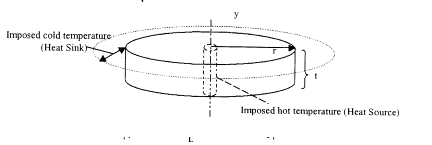
Figure 2 The radial conduction
Procedure:
Experiment 1: Linear Conduction Along
Cylindrical Metal Rod
1. The brass specimen was installed to the test unit.
2. The probe was inserted in the holes provided along the specimen, while making sure that each one was touching the rod. The distance for each thermocouple (x values) was noted.
3. The heater was turned on and the temperature after the readings reached steady value was recorded, which was about 30, to 45 minutes. The corresponding heater input was also recorded.
4. The procedures 1 to 3 were repeated by using stainless steel and both aluminum (with different radius)
Experiment 2: Radial Conduction Along Circular
Metal Plate.
1. The thermocouples were inserted in the holes provided on the specimen, while making sure that each one was operating properly. The distance for each thermocouple (r-values) was noted.
2. The heater was turned on and the temperatures after the readings reached steady state,which was about 30 to 45 minutes was recorded. The corresponding heater input was also recorded.
Data,
Observation and Results:
Experiment 1: Linear
conduction along cylindrical metal rod.
Power input = 10 Watt
